

Take a front‑row seat to hear live interviews with clinical experts! You can expand or refresh your knowledge on various aspects of respiratory support and get valuable tips for your daily practice.
A series of live Zoom events on different aspects of a central topic
Events are between 30 and 60 minutes in duration
Each event features a presentation by the speaker together with questions from the interviewer
Anyone can join but registration is necessary
Sign up below to receive your access link and a link to the recording after the event
You can ask the experts any questions directly during the webinar
We are sure you have heard the story of automation in mechanical ventilation. But there are so many more stories than just that one! Join our experts as they tell you their stories about the many faces of INTELLiVENT‑ASV: As the protector of both the lungs and the brain, as the chameleon who adapts to every patient condition, as your assistant at every bedside, even up in the air. We look to forward to seeing you on air with our experts.

Ventilation Practitioner
Reinier de Graaf Hospital, Delft, the Netherlands
Amsterdam UMC, location ‘AMC’, Amsterdam, the Netherlands

Senior Intensivist
Sainte Musse Hospital
Toulon, France
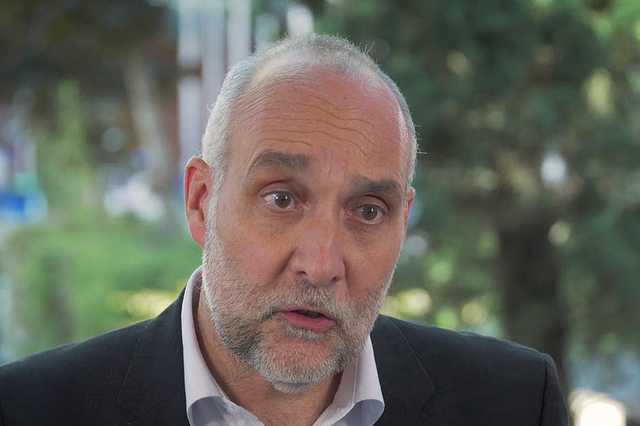
Team Leader Medical Research
Hamilton Medical AG
Bonaduz, Switzerland

Speaker: Laura Buiteman-Kruizinga, Interviewer: Jesse van Akkeren
(COMPLETED)
To kick off this series, we start with the ABC of INTELLiVENT-ASV. What is it and how does it work, what do you see on the screen and how do you adjust settings, why implement it in your ICU and what are the results?
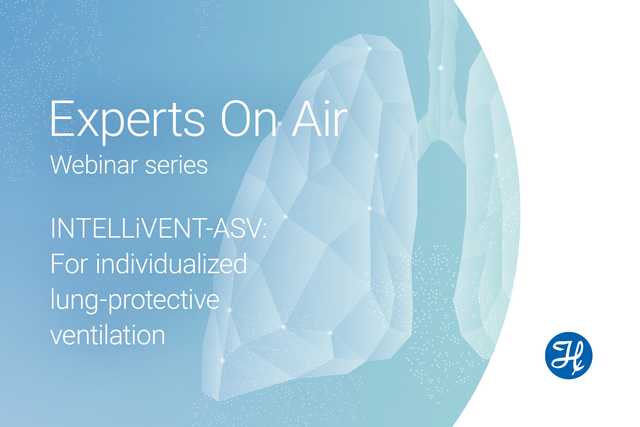
Speaker: Jean-Michel Arnal, Interviewer: Marco Maggiorini
(COMPLETED)
Patients present with vastly different conditions and their condition may change at any time. In this second webinar, we look at the ways INTELLiVENT-ASV adjusts settings with every breath to maintain the lowest work of breathing and keep parameters within a safe range for each individual patient.
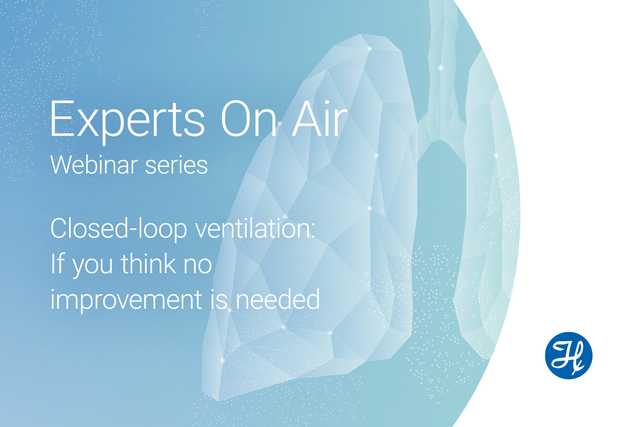
Speaker: Marcus Schultz, Interviewer: Giorgio A. Iotti
(COMPLETED)
In healthy patients, a lung-protective strategy is often considered unnecessary - especially for short periods of ventilation. But protecting the lung is important in every patient, regardless of their condition. So how can a closed-loop system help when you thought no improvement in ventilation strategy was needed?
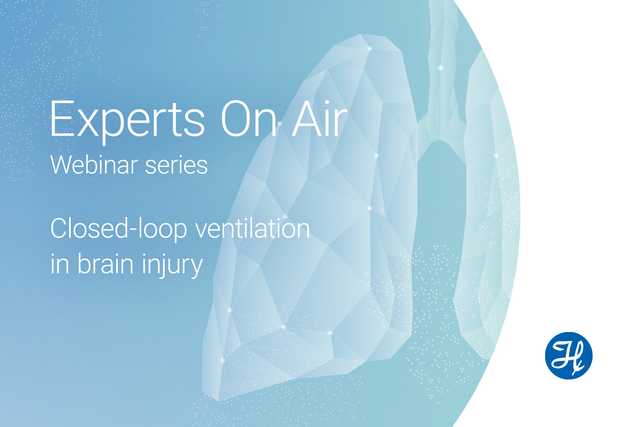
Speaker: Giorgio A. Iotti; Interviewer: Marco Maggiorini
(COMPLETED)
Severe brain injury couples the need for deep sedation and consequent depression of the respiratory center with the conflicting need for strict control of arterial blood gases. Advanced closed-loop ventilation enables you to provide an artificial respiratory center while still protecting the lung.
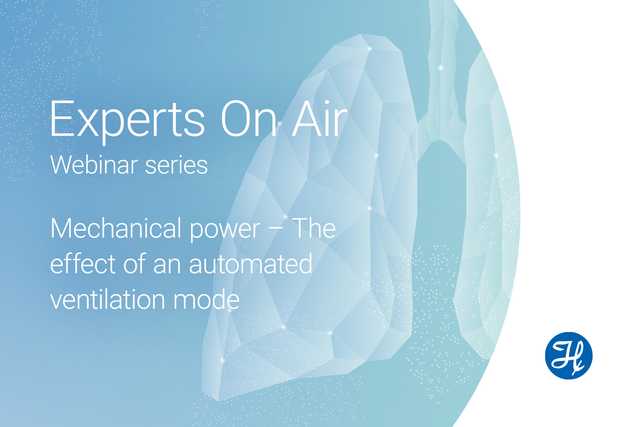
Speaker: Laura Buiteman-Kruizinga; Interviewer; Giorgio A. Iotti
(COMPLETED)
There has been a lot of talk in recent times about mechanical power. So how does INTELLiVENT-ASV affect this important parameter? And what is the impact on MP of tidal volume and respiratory rate automatically selected by the ASV algorithm? In this webinar we give you an overview of the latest evidence.

Speaker: Marco Maggiorini; Interviewer; Giorgio A. Iotti
(COMPLETED)
We know that INTELLiVENT-ASV continuously reacts to changes in lung condition and gas exchange to provide individualized, lung-protective ventilation. But what about in very challenging cases? Can we trust it? We share our experience using INTELLiVENT-ASV in a patient with hypercapninc respiratory failure, severely impaired chest compliance, and cor pulmonale.
Below you can find the answers to those questions not addressed during the webinar and follow the link to access the webinar's recording.
This depends on the patient's disease and lung condition, but for example in ARDS patients it is common to target a somewhat lower SpO2 of 90-94% to prevent excessive oxygen use and thus help prevent VILI. This usually results in a lower level of oxygen.
We used and still use APV-CMV (adaptive pressure ventilation), pressure controlled ventilation, pressure support ventilation and ASV.
When there is a measurement failure for any reason, INTELLiVENT-ASV will stop adjusting and freeze settings, and will generate alarms. If there is no solution at that time, i.e., SpO2 measurement due to poor perfusion, you can choose to set the controller to 'manual'.
The set I:E ratio by INTELLiVENT‑ASV is based on the RCexp, also known as the time constant. Meaning that there is a measurement of the duration of expiration based on lung mechanics and the expiration time will adjust to that. For example, for a lung with high compliance like COPD, INTELLiVENT‑ASV will set a longer expiration time and therefore prevent for auto‑PEEP.
Indeed, you try to ensure the best measurement with different options, and if the quality of the measurement is poor due to the illness of the patient, you can choose to set the controller to 'manual' until measurements are improved, then you can turn back to 'automatic'.
This is a matter of setting PEEP limits well or if necessary you can always set PEEP to 'manual'. Then you still have the advantage of automated adjustments of FiO2 and automated setting and adjustments of the VT/RR combination.
We have used it in these patients, but comparable to conventional ventilation you still need to check tidal volumes, pressures and adjust where necessary.
I think this is comparable to conventional ventilation, where you also check the pCO2 in the arterial blood gas and adjust settings where necessary.
In my experience, there are no unwanted pressure drops in spontaneously breathing patients.
Regarding implementation, this could be a webinar of its own :). Our team is focused on innovation and there are good arguments for using INTELLiVENT-ASV.
Well, as explained in the webinar, as a user you are still in control and are supervising the ventilator and adjusting targets, limits and settings, if necessary with measurements like Vd/Vt and pH.
There is, in my opinion, not a specific difference between these patient groups, good results achieved in both groups.
No, this is the responsibility of the caregiver, because you are still in control of settings, limits and additional measurements for setting ventilation parameters.
The logic behind selecting a specific breathing pattern (Vt and RR) is based on lung mechanics, and it’s clearly described in literature. The algorithms used by INTELLiVENT-ASV for CO2 elimination and oxygenation are based on patient signals and user-set targets and limits. The way INTELLiVENT-ASV sets the parameters based on lung mechanics and "how and why" is available in the ventilator's operator’s manual, as well as in the clinical literature.
Below you can find the link to the recording, as well as answers to those questions not addressed during the webinar.
ARDS due to COVID is not that different in terms of PEEP compared to other causes of ARDS. Some patients have good potential for recruitment and should be ventilated with PEEP above 10 cmH2O, while others have very low potential and should be ventilated with low PEEP. A P/V curve may help to assess recruitability using the same threshold as for ARDS.
This is not easy. For the moment, the ventilator does not provide this variable. So we have to calculate it manually using one of the simplified formula published.
There are published data showing that the number of manual settings is decreased by half when using INTELLiVENT-ASV, as compared to conventionnal modes. How this translates in terms of workload, namely the time spent by caregivers to perform these tasks and the cognitive involvment, is unknown. Clinicians that use INTELLiVENT-ASV on a regular basis claim that it decreases workload, but we have no data to support it.
INTELLiVENT-ASV should not be used in the case of bronchopleural fistula or in the case of dyshemoglobin. I consider that we have to be careful in severe COPD or asthmatic patients, and severe ARDS, because we may have to use different targets and accept higher airway pressure.
INTELLiVENT-ASV keeps end-tidal CO2 within the targets set by the user, with a permissive hypercapnia concept. Clinician should check ABGs regularly, in particular for pH and the potential gradient between PaCO2 and end-tidal CO2. In case of permissive hypercapnia with PaCO2 higher than 55 mmHg, clinicians should check if there is no pulmonary hypertension using cardiac echo.
Yes, the same way as in other cases.
Yes, the same way as in other cases.
If expiration is passive, Rcexp is accurate. If the patient has an active expiration or cough, it is not accurate.
Below you can find the link to the recording, as well as answers to those questions not addressed during the webinar. These questions have been commented on by both the speaker and the interviewer.
Speaker's response: The question is what you call 'protective' - usually it refers to tidal volume size and as explained in some patients, those with a relative normal compliance, ASV and INTELLiVENT-ASV 'use' or 'allow' larger tidal volumes; if you refer to protective ventilation as ventilation with a low driving pressure or low mechanical power, realize that ventilation per se is not a treatment: If lung conditions are such that driving pressure or mechanical power cannot be reduced, one should consider another lung-protective strategy, ECMO.
Interviewer's comments: The question is referring to manual controls. Actually, one of the purposes of advanced automation is avoiding possible human mistakes on manual controls. However, even INTELLiVENT-ASV includes some manual controls for fine-tuning, and Hamilton Medical ventilators provide all conventional modes with manual controls. All of them must have large ranges conceived to face uncommon needs or conditions, but this means (as you say) exposure to the risk of an inappropriate setting. The risk is considered to be largely mitigated by these controls being operated only by trained personnel, i.e. by the strength of education. Nevertheless, adding some GUI tool to force the user's attention to uncommon (possibly inappropriate) settings may be an idea to be considered.
Speaker's response: Correct, herein it follows the principles of Otis, and thus bases expiration (and thus inspiration) time on the expiratory time constant (RCexp): If high, a longer expiration time is needed, and thus the inspiration time will be shorter, and vice versa.
Interviewer's comments: This is an important observation. ASV pays much attention to an individualized setting of Ti, based on the best balance between the assigned expiratory time (Te) and the speed of exhalation as reflected by the expiratory time constant (RCexp). This typically results in an I:E of 1:1 in lung restriction, 2:3 or 1:2 in mechanically normal lungs, and lower than 1:2 in lung obstruction. This approach works effectively against air trapping and avoids unnecessary high inspiratory flow rates. Also, it mimics the natural human respiratory center response to deviation from normal respiratory mechanics.
Correct, when the compliance is relatively normal, it could be better to use a somewhat higher tidal volume in case the use of a lower tidal volume mandates a higher respiratory rate: The respiratory rate adds to the power of ventilation, so should better stay low.
Speaker's answer: Due to the leakages it is not safe to use.
Interviewer's comment: Only good tightness would allow appropriate responses and good performance. Since we well know that good tightness is not continuously guaranteed during NIV, the answer is: "It is recommended NOT to use I-ASV with a mask as an interface".
Speaker's answer: Appreciation comes with experience, knowledge and understanding: Training, understanding what happens in the machine (it should not be a black box) and working with the mode - first with a small group of users and later on the whole team - may all help.
Below you can find the link to the recording, as well as answers to those questions not addressed during the webinar. The speaker has also provided more comprehensive written answers to some of the other questions.
(Editor's note: This question answered in the webinar; however, the speaker has provided a more comprehensive answer here.)
When the "Brain injury" patient condition is selected in I‑ASV, the ventilation controller responds only to PetCO2 and therefore the automatic %MinVol selection is not directly affected by changes in the spontaneous respiratory rate. However, if a pattern like a Cheyne‑Stokes starts, it has an effect, since it involves:
Whether the dynamic responses of I‑ASV may provide any advantage (or disadvantages), compared to a more static ventilation mode, it is difficult to predict and the result may be different in the individual cases.
Intuitively, since the problem of periodical breathing stays in the patient's respiratory center, we can harldy expect a really satisfactory solution to come from the mechanical ventilator. If clinically indicated, the fire should be extinguished by sedation or sedo-paralysis, and then I-ASV will take care of appropriate ventilation.
(Editor's note: The question refers to previous mention of HME filters made by the speaker.)
Due to its position at the Y‑piece of the ventilator circuit, an HME is a kind of parasite for the efficiency of ventilation, and hence of CO2 elimination. Adding an HME means to increase the system deadspace exactly by the internal volume of the HME. For any given minute volume, adding an HME will involve some increase in PaCO2 that can be offset only by increasing the minute volume. The other way around, the opposite takes place if an HME is removed and replaced by a hot‑water humidifier, the latter being positioned within the inspiratory limb of the ventilator circuit and thus never involving an increase in deadspace.
For these reasons we should avoid using HMEs whenever we believe it is clinically important to reduce the amount of ventilation needed for good control of PaCO2 and arterial pH.
All this is important not only during passive ventilation, but even more during active breathing.
The same principles should be applied to any other piece placed between the Y-piece and the ET-tube: whatever unnecessary should be considered a parasite to be removed.
(Editor's note: This was answered in part during the webinar, the speaker has added more information here).
I discussed for acute brain injury a PaO2 target of 80‑120 mmHg (with no less than 70 and no more that 200 mmHg). Aiming to this target excludes any permission for even mildly reduced arterial oxygenation, while adding the difficulty of simultaneously avoiding any releval hyperoxia. In terms of functional hemoglobin saturation, I think that these targets match well with an SpO2 of 98%, that is obviously higher than the oxygenation target we would consider in pure ARDS.
How to achieve this SpO2 when ABI is combined with ARDS?
Not recommendable as routine, but not to be 100% excluded if the risk/benefit balance favours the benefit, in the individual case.
Invasive ICP monitoring is necessary. Having a ventricular derivation or craniectomy helps a lot.
Prone positioning should be performed in anti‑trendelenburg position, with much attention to the neck (straight head, free neck).
As for the recruitment maneuvers, a sustained maneuver shorter than 10-s, for sure not longer than that, could be considered, but only if ICP is controlled. A good alternative may be to attempt recruitment by alternative, lighter maneuvers, like temporarily increased Vt.
According to the large USA study reported at https://doi.org/10.1016/j.resuscitation.2022.10.011 (1) it seems very important, at least in the group of patients recovered from cardiac arrest. Can these results be generalized to the much larger category of acute brain injury?
For many different reasons, with conventional technology, warranting brain protective ventilation on the scene and during primary trasport is difficult. In theory, automation as provided by I‑ASV could be very helpful to provide good control of both PaCO2 and PaO2 (when clinically possible).
The duration should be individual, depending on the type of brain injury and on its individual course.
Having a strong neuro‑monitoring can be very helpful to delay the start of "sedations windows" and thus letting the patient to take advantage from a longer time of stability.
Choosing the best time for the first sedation windows is part of art of neuro-intensive care. It is true, at that point some patients increase their ventilation and become hypocapnic. In those instances, I-ASV (with "Brain injury" patient condition ON) should react properly by automatically decreasing the %MinVol setting, but this could not be enough against a high respiratory drive and frequency by the patient. Opening sedation windows requires close attention to the patient by the clinicians, who will decide when and how restarting sedation to recover stability.
Below you can find the link to the recording, as well as answers to those questions not addressed during the webinar.
At the moment I focus most on bedside teaching about the theory itself. I explain, when adjusting the ventilator, that MP is a balance of all parameters, like tidal volume and respiratory rate, and that for reaching the best balance (the lowest possible MP) a certain combination of settings is the best combination.
I think in future trials it is interesting to use a calculation where MP is normalized to the compliance of the lung.
Below you can find the link to the recording, as well as additional answers to questions not addressed during the webinar.
(Editor's note: This question was partly answered in the webinar; the speaker has provided additional information here.)
I selected the chronic hypercapnia condition because the patient's ABG showed a Bicarbonate HCO3- of 30 mmol/L, suggesting a renal compensation for a chronic elevation of PaCO2. Under the patient condition Chronic hypercapnia, the EtCO2 target is shifted automatically to a higher level, which can further be increased manually.
(Editor's note: This question was answered during the webinar; the speaker has provided additional information here.)
In INTELLIVENT-ASV %MinVol maximum is 200%. If you wish to increase it because EtCO2 (confirmed by a blood gas measurement of PaCO2) is still too high, you can increase %MinVol manually up to 300%.
There are three conditions in which you have to change %MinVol from automatic to manual.
According to the product label we have the following contraindications.
Health care providers should check regularly the monitor of the ventilator and look whether the displayed curves and your target parameters (essentially: Vt/kgIBW, RR, RCexp, EtCO2, Ppeak/Pplat, PEEP, Minute Volume and FiO2 (SpO2)) are as you would expect. You can check details of your ventilator parameters by opening views 1 and 2 on the screen. In addition, you have on the screen the possibility to show trends for various respiratory parameters. Check and if necessary adjust alarms.
No you can't use INTELLiVENT-ASV as a manually set bi-level ventilation mode such as DuoPAP or APRV. In fact a manual increase of PASVLimit or %MinVol will not result necessarily in an increase of Pinsp.
I like to do manual recruitment maneuvers using the P/V Tool software provided on the ventilators. In doing it manualy you have control of potentially harmful hemodynamic effects of a recruitment maneuver.
Below you can find the link to the recording, as well as answers to the two questions not addressed during the webinar.
To be in full operational capability it took almost 6 months, starting with a small physician staff (just 8 doctors and 12 nurses work in our HEMS) who already was familiar with ASV.
For about 2 years and again, the staff was small and we fly a lot with many critical patients.
The contents of this page are for informational purposes only and are not intended to be a substitute for professional training or for standard treatment guidelines in your facility. The responses to the questions on this page were prepared by the respective webinar's speaker; any recommendations made here with respect to clinical practice or the use of specific products, technology, or therapies represent the personal opinion of the speaker only, and may not be considered as official recommendations made by Hamilton Medical AG. Hamilton Medical AG provides no warranty with respect to the information contained ion this page and reliance on any part of this information is solely at your own risk.